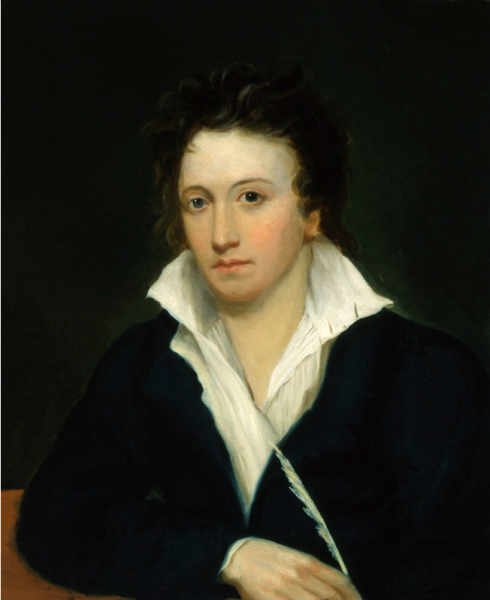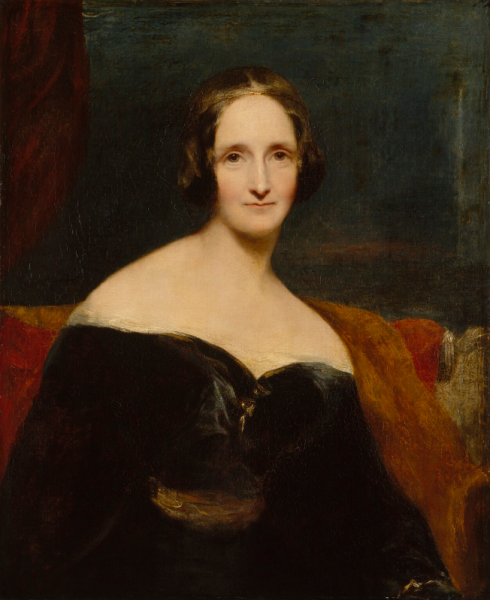Loneliness has been called a ‘modern plague’. COVID-19 spreads that plague in differing ways: changing our relation to each other in public spaces and private homes, transforming our civic behaviours and our intimate feelings [1]. Our willingness to stay distant has become the ultimate testament to our love for one another. The extraordinary pressures of pandemic estrange us from our feelings, threatening to dissolve both society and community. Pandemic threatens the ultimate trauma of separation and loss.
In 1824 Mary Shelley published a novel, The Last Man, that conjures up just such a trauma. In this futurist fiction a plague sweeps across continents, annihilating civilizations and causing global unrest. A novel that begins as the collective biography of a circle of friends, loosely based on Shelley’s own, gradually gives way to a tale about the inexorable power of disease, until only one individual remains – the solitary narrator, Lionel Verney.
If, as Jill Lepore has recently written, ‘the plague novel is the place where all human beings abandon all other human beings’, then The Last Man is not a conventional plague novel [2]. Inspired by the enlightened ideals of a man called Adrian (modelled on Shelley’s husband, Percy Bysshe), Verney and his friends understand the international consequences of the plague, and the need for political action.

They oppose self-serving populist policies promoted by England’s resident demagogue, a man known only as Ryland. Shelley’s characters refuse to abandon each other, intervening to assist others, and sacrificing themselves for the greater good. Together they pursue a final desperate ‘scheme of migration’ to Italy in the hope of salvaging the remnant of humanity.
But Shelley is unsparing in her depiction of the limits of individual agency and the fallacy of personal exceptionalism.
Each person ‘trusted that their beloved family would be the one preserved’, but the plague demolishes ‘that pertinacious optimism which…characterized our human nature.’
The Last Man transforms the felicity of youth and intelligence and love through a narrative which compels the reader to confront the fact that horrible things are not reserved for the poor, the immoral, or the stupid, or those who happen to be in other countries. But while The Last Man uses the plague as a catalyst for its deconstruction of society, culture, and friendship, it is not ultimately a tale of deadly infection. It is a story about an apocalypse of loneliness.

Shelley had explored loneliness before. Frankenstein’s creature is, after all, Romanticism’s avatar of ultimate alienation. The creature’s wretched fate demonstrates the monstrous deprivations of basic sociality: not to share in family is to be tormented by exclusion. But in The Last Man, the experience of familial affection only serves to amplify the pains of solitude. As it progresses, the novel accumulates scenes of death: infants, parents, wives, husbands, brothers, sisters. Its bills of mortality are unremitting; Shelley presents the reader with the impossible calculus of loss.
The novel’s account of global pandemic draws on her reading of Daniel Defoe’s The Journal of the Plague Year (1722), a work which tries to capture the impact of contagious disease by shifting between bare enumeration, anecdote, and the isolated perspective of its first-person narrator – the quasi-anonymous H.F. Yet if Journal of the Plague Year provides Shelley with an historical account of the paranoia, confusion, and horror of contagious disease, it also furnishes her with a sense of individual alienation peculiar to Defoe.
In The Last Man’s crowning catastrophe, Verney’s two remaining friends are drowned in a storm. He finds himself alive on the shore of Italy:
For an instant I compared myself to that monarch of the waste – Robinson Crusoe. We had both been thrown companionless – he on the shore of a desolate island: I on that of a desolate world.
The schemes of material accumulation and improvement that Crusoe finds diverting cannot comfort Shelley’s relic. While Defoe’s desert island is reassuringly temporary, Shelley’s castaway’s predicament is permanent.
‘Shall I wake, and speak to none, pass the interminable hours, my soul, islanded in the world, a solitary point, surrounded by vacuum?’, Verney asks.
Such vertiginous sense of isolation, both temporal and existential, fuels the terror of the final pages of The Last Man. Humanity has receded ‘like a tide…leaving [the individual] blank and bare in the midst.’ Plague is merely Shelley’s pretext for presenting the malaise of ‘utter irremediable loneliness’: a condition of pathological intensity.
The Last Man thus deconstructs the optimistic possibilities of transcendence found elsewhere in romantic writing. In her novel Mathilda, Shelley was able to imagine a ‘perfect solitude’ where generous stores of self-subsistence meant you ‘wish for no friend’ because your own thoughts were company enough. Verney, wandering disconsolately from one empty town to another, leaves in each a desperate message: ‘Friend, come! I wait for thee!’ The irony of this long novel is that it is written without hope of a readership, yet desperately seeks an audience.
This tragic predicament – on the cusp between the need to communicate and consciousness of its futility – is Beckett without the jokes. Who is Verney in this empty world? The stark conditions of a friendless futurity dramatically reframe the philosopher David Hume’s lament:
‘Where am I, or what? From what causes do I derive my existence, and to what condition shall I return?’ [3].
In The Last Man, loneliness is a kind of primal anguish: the reactivation of world-annihilating pain which critics have frequently connected to the traumatic death of Shelley’s mother, Mary Wollstonecraft, days after her birth. As Mary Jacobus has argued, Shelley’s writing is ‘suffused with maternal mourning as well as survivor guilt’ [4]. Verney’s grief – denatured and dispossessed – is that of the childless mother.
The Last Man is an astonishing work, but it does not spare its readers. Its vision of the hapless survivor living a kind of posthumous existence resonates with contemporary feelings of climate grief as well as the sense of helplessness as we confront COVID-19. Can such a book assist in this present moment?

Peter Melville has argued that Verney’s despair becomes ‘a kind of antibody that allows him to live with and confront the devastation and loneliness of his tragic fate’. By the close of the novel, Verney’s persistence makes him a monument to human endurance: ‘a figure whose psychical fortitude sustains and produces an enduring synthesis between contrary mental states—between hope and despair—which in turn embodies … the spectral image of good health’ [5].
Framing Shelley’s novel within the current COVID-19 crisis, Eileen Hunt Botting notes that ‘Verney realizes that even if he is the last man on Earth, he must live as though he is not. He must sustain humanity by acting upon his profound sense of the interconnectedness of his fate with other forms of life — human or not’ [6]. If the literature of loneliness inoculates against the risks of enforced, unwilled isolation, it does so by reminding us of what we stand to lose if we forget each other.
[1] Keith Snell, Spirits of Community: English Senses of Belonging and Loss, 1750-2000 (Bloomsbury, 2016), p. 1.
[2] Jill Lepore, ‘What our contagion fables are really about’, The New Yorker, March 30, 2020.
[3] David Hume, A Treatise of Human Nature (1739–40), London, 1987, p. 316.
[4] Mary Jacobus, First Things: Reading the Maternal Imaginary (Routledge, 1995), p. 107.
[5] Peter Melville, ‘The Problem of immunity in The Last Man’, SEL: 1500-1800, 2007, 47:4.
[6] Eileen Hunt Botting, ‘Mary Shelley Created ‘Frankenstein,’ and Then a Pandemic’, The New York Times, March 13, 2020.
Rebecca Barr (@R_A_Barr) is a lecturer in the Faculty of English at the University of Cambridge.